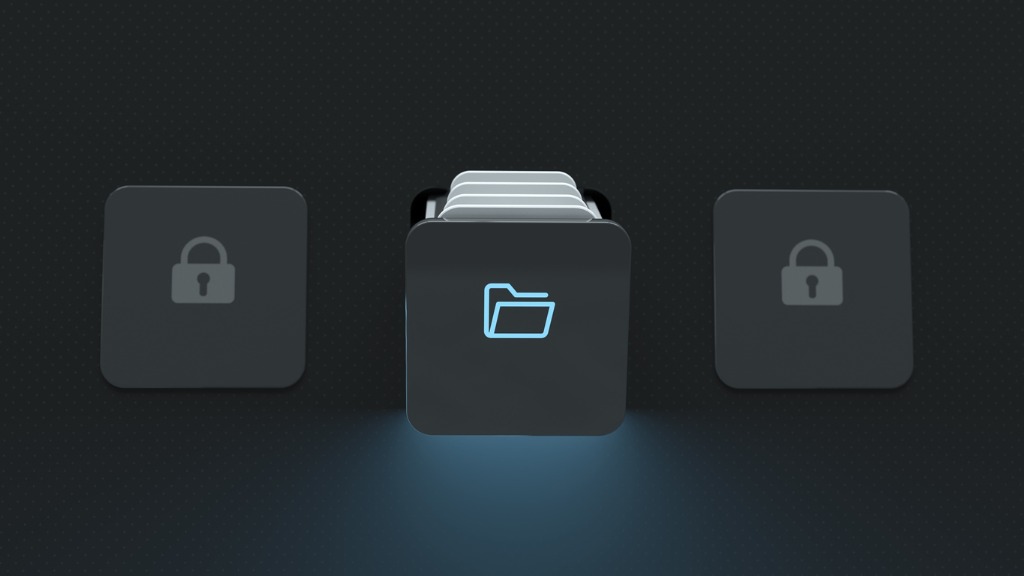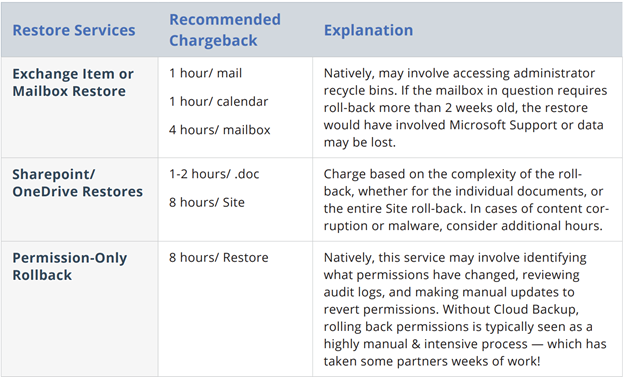4 Criteria to Help MSPs Evaluate SaaS Backup Providers

The trend in digital workplace solutions has been moving away from rigid self-hosted systems and towards subscription models and cloud-based SaaS providers, including for services such as SaaS backup.
However, not all clouds are created equal. There are four critical components to evaluate when developing a data protection and Microsoft 365 backup strategy for your customers.
1. RPO and RTO
Anytime you discuss Microsoft 365 data protection, you need to approach the problem with two primary goals in mind: Recovery Point Objective (RPO) and Recovery Time Objective (RTO).
RPO, the maximum targeted timeframe in which data can be restored from a backup, includes the plan for the frequency of backups as well as your ability to recover individual components.
Think about it: how many times a day does your customers’ data need to be backed up? Also, how granularly do you need to be able to restore content? Is it at the item level? Is it Team channel conversations? Does the solution back up and restore files and folders in Groups, Teams, and SharePoint?

RTO, or the amount of time in which content must be restored, helps you refine your recovery points as well as classify the data you are backing up.
How quickly will your customers need their content restored? Also, how much content can you restore inside of a specific timeframe? If you are not able to restore user content quickly enough, business can grind to a halt. Then, all eyes will be on you as the MSP.
Ensuring that you can restore content on-demand as quickly as possible is the first step in protecting not only your customers’ content but also yourself. This is also where you’ll be able to deliver significant ROI for your customers if you can get them back to work fast.
AvePoint’s Cloud Backup ensures MSPs can get their customers back up and running in no time. So, when selling your customers on your backup services, backed by Cloud Backup, sell them on Restore. Because time is money, and you will help your customers get back to work faster—no matter the severity of the outage!

Complex scenarios that prove difficult or almost impossible natively but can be completed quickly with Cloud Backup include:
- Right to Be Forgotten requests
- Data Subject Access Requests
- Loss of customer data
- Loss of employee data
- Permissions failures & fiascos
- Ransomware attacks
- Service outages
2. Ease of Use
One of the benefits of SaaS backup solutions is that they’re typically quick to install and maintain. You will want to make sure the user interface is intuitive for restores.
Evaluating the ease of use is not just about the installation and user interface, however. As an MSP, you also need an easy-to-use portal to make it easy to manage multiple tenants, keep costs in check, and manage billing.
Finally, giving customers access to find and restore their own lost data, and only their data, can allow you to provide an additional offering (either as an additional cost or as a market differentiator). Evaluate if a cloud backup solution has self-service options for your customers.
Imagine being able to take your central Microsoft 365 tenant and carve it up into separate, more manageable containers that can be administered at the division level without giving up access to the entire tenant.
So, for example, while Contoso may be under a single Microsoft 365 tenant, they could then create Microsoft 365 admins in the North America marketing department who just have access to those workspaces and data when managing backup and restore tasks.
Finally, giving users the access to find and restore their own lost data, and only their data, can free IT teams from routine restore tasks. Evaluate if a cloud backup solution has self-service options for your users.

3. Security and Credibility
When you’re leveraging the SaaS solutions of a vendor, you are inheriting their level of commitment to organizational security. Certifications and standards like ISO 27001 are important indicators that a SaaS vendor is fully committed to the security of their solutions.
Another helpful question to ascertain your SaaS vendor’s dedication to security is what level of access they have to your data. For example, AvePoint leverages Azure Key Vault to provide unique encryption keys for each tenant that is owned by each customer to prevent unauthorized access.
Another consideration is if your data must reside in a certain region or data center, your backup data may need to as well.
Can your backup vendor support multi-geo capability? This is the ability to provision and store data at rest in the geo-locations that you’ve chosen to meet data residency requirements.
4. Chargeback Options
Does the backup SaaS provider have multiple ways for you to generate revenue with customers?
For the baseline service, AvePoint Elements recommends charging a markup based on what Microsoft 365 or Dynamics 365 services you intend to cover as well as the backup frequency (SLA).
Then, for restore operations, extended services, or project-based tasks, most of our partners like to establish chargeback models based on man-hours (consulting or service hours).
For example, when it comes to restores, you have the option to charge different rates per restore service. Typically, we recommend charging based on the service hours a manual restore or rollback would have taken.

Anytime a request comes through, it’s margin in your pocket, as you’ll still pay the same flat rate to AvePoint.
When you use Cloud Backup, as backup operations happen (automatically), and as restore actions are completed, Audit Logs are created and stored. These administrative activities can be easily exported and sent to customers as proof of service, giving customers extra confidence in their cloud and your services.
Final Thoughts
The above list is just some methodologies and considerations to keep in mind when evaluating SaaS backup providers. You can determine for yourself which criteria to measure providers against in order to provide the most value to your customers and the greatest revenue for yourself.
While IT budgets may be tight, the cost of losing critical business data is much higher, particularly for regulated organizations. Now is the time to find a good SaaS backup provider to help you deliver critical backup services for your cloud customers.
Ready for more backup tips? Learn how to develop the most effective Microsoft 365 backup strategy for your customers in this free eBook How and Why MSPs Should Backup their Customers’ Microsoft 365 Tenants. And feel free to request a demo of Cloud Backup too!
For more on SaaS backup be sure to subscribe to our blog.
Mamoona is a Product Marketing Manager at AvePoint. A data-driven storyteller, she is intrapreneurial with a determined approach to getting things done with a decade of hands-on, client- & partner-side experience with insights, stratecution, and revenue generation.




